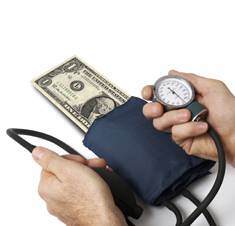When it’s time to sell your practice, you want to be sure that you receive the maximum value.

Just as when you sell a home, there are ways you can spruce up your practice to become more appealing and get the best price.
But medical practices can’t increase their value overnight. Ideally, you’ll start preparing for a sale several years in advance.
Here are eight ways to increase the perceived and inherent value of your practice:
1. Build your practice. A busy practice has more inherent value than a slow one. Look at patient numbers and patient age distribution from the eyes of a prospective buyer. Would you consider your practice a good investment?
2. Reduce your debts. Look at your debt-to-income ratio. How does it compare to that of your peers? Wherever possible, without compromising the integrity of your practice, reduce your debts and expenses.
3. Increase your efficiency. Your office should hum with efficiency. If your office procedures are bogged down by archaic systems, look for ways to streamline your business operations.
4. Clear up accounts receivable. If you have outstanding accounts, turn them over to a collection agency. Eliminate slow-pay and no-pay accounts.
5. Keep good records. Make it easy to find key financial information relating to your practice. Keep orderly records that can clearly give a prospective buyer an accurate picture of your practice’s financial situation.
6. Develop your staff. A top-notch staff is a real practice asset. Arrange for your staff to receive the necessary training, and continue to find ways to motivate your employees.
7. Dress up your office. A smart-looking, clean office and waiting area with up-to-date equipment and well-kept furnishings can do a lot for the perceived value of a practice. These attributes can’t substitute for solid financials, but they can help weigh the balance in your favor.
8. Take your temperature. If you’d like to know the current value of your practice, you may want to get an independent valuation. A valuations expert will attempt to find your practice’s fair market value. The expert will look at both tangible assets and intangible assets. Equipment, furniture, supplies, real estate, accounts receivable, etc., are considered tangible assets. Intangible assets include such things as goodwill and reputation in the community.
With a clear picture of your practice’s current value, you’ll be better prepared to maximize that value when it comes time to sell.




